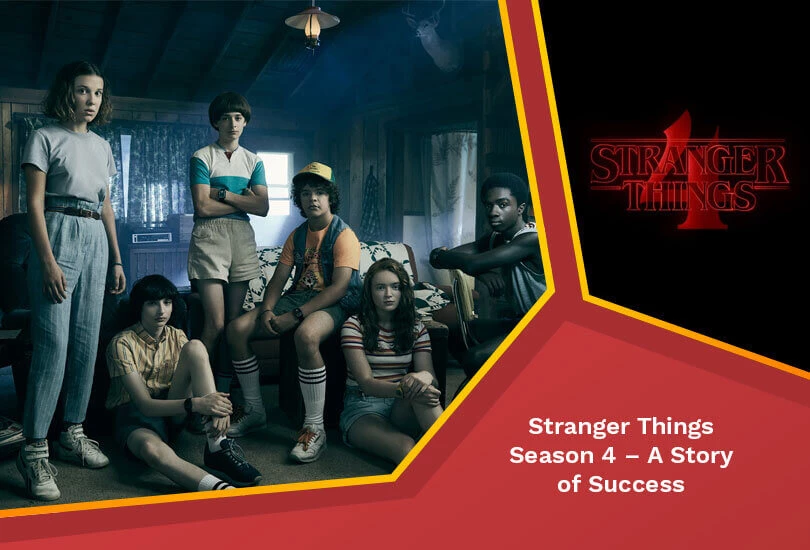Gary is a geeky-binge watcher who loves to pen down all that he watches. The night-owl has just got two hobbies, binge-watching all the latest shows and writing everything about them.
If you haven't seen Stranger Things Season 4 yet, you're missing out on one of the most compelling television series out there.

The third season of the hit Netflix show is out this week, and I’m excited to see how things pick up. Here’s my three-pronged review of the series so far. In it, I’ll touch on Sentient villains, Character progression, and the tri-pronged structure of the series.
Stranger Things
After three seasons of critically acclaimed shows, Netflix has finally delivered something truly extraordinary with Stranger Things Season 4. The fourth season has received high ratings and has proven to be a welcome return for the streaming service. The show has received mixed reviews, though it has enjoyed praise for its retro colours and energetic cinematography. While critics have praised the show’s witty humour and its engaging characters, the series has suffered in the last quarter of the year. With the show’s release, Netflix will be able to claim victory.
Those looking for a monster may be disappointed with Vecna, the new season’s big bad. The character is smart and far more than a twisted Lovecraftian monster. Vecna knows the kids’ names and is highly adept at psychological torture. The monster’s reign of terror is swift in Hawkins, and it calls to mind the Satanic Panic. The first season’s storyline introduced the world to Hawkins, a fictional town in a dystopian future.
Stranger Things’ tri-pronged structure
The series is rooted in Stephen King’s books, and there are many elements of the show that have been replicated by other writers. For example, there are portals and monsters, as well as children with psychic powers. In a way, this is similar to “Stranger Things,” but it’s also unique. While the show has been a hit, there are some things fans should know about it.
Character progression
As the third season of Stranger Things comes to a close, it’s important to consider the character progression of the other main characters. While the first season introduced us to Steve, we see him become more involved in the events of the season. He loves basketball and partying, and he picks on the “freaks” around him. In season three, we learned more about him when he played basketball with Mike and Dustin. Later, we learn that he’s also a nerd, which makes him the perfect candidate for this role. On the other hand, Billy Hargrove had been acting like a bully in the past because of abuse in his home.
This is an important development for the show. While the last season focused on the lives of the kids, Stranger Things is no less compelling for this reason. This year, the series has brought about a major character progression for all of the main characters. The first season focused on children escaping the town of Hawkins while on bikes. This new season revolves around the lives of these children and their struggles to survive in this new world.
Sentient villain
The fourth season of the Netflix series Stranger Things will introduce a new, terrifying antagonist in the form of Victor Creel, the mysterious bogeyman who reduced Petey McHew to tears at the beginning of the season. Played by Nancy Buckley, a criminal mind researcher, and Robin Buckley, a psychology student from Notre Dame, Victor Creel has already etched his name in Stranger Things lore.
The series’ third season ended with a final battle between Eleven and the Mind Flayer, a sentient creature from the Upside Down. Eleven, the main antagonist of the show, closed Upside Down’s portal, but the Mind Flayer was able to return and find a new host in the form of Billy Hargrove, the abusive stepbrother of Max Mayfield. Billy Hargrove created a blob-like physical form in the real world.
Read More:




